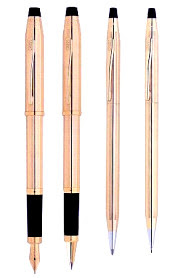Company: Research In Motion
Brand Count:204
 . The brand was an answer to the need for a traveling executive to connect to the office.
. The brand was an answer to the need for a traveling executive to connect to the office.Blackberry is a device which supports Push Email,Text messaging,Internet faxing web browsing etc. Rather than a device, Blackberry is a technology that enables one to forward emails from the customer's desktop to the mobile device. BlackBerry was an instant hit across the world and when you go to an airport, its inevitable to see executives using this device. BlackBerry was named By Lexicon Branding Inc which is a firm specialising in Brand Naming services. The name is said to be derived from Strawberry 'cause the buttons of the device looked like strawberry. ( source:wikipedia)
BlackBerry came to India in 2004. Airtel was the first service provider to enter into contract with BlackBerry. In India, Blackberry never advertise but it is the service provider that advertised the connectivity. Since this brand was aimed at the corporate users, it made more sense to entrust the promotional task to the sales persons rather than to the advertising agency.
More over BlackBerry did not need to advertise because it was a product which clearly satisfied a need of its TG. When it was launched,there was no smart phone or web enabled pho
 nes.Hence BlackBerry offered a solution to stay connected while travel. This product was lapped up by Corporate India. Although BlackBerry is not a mobile phone, the brand was able to build a point of parity with Mobile phones by associating itself with the cellular service providers. Airtel had an exclusive agreement with BlackBerry which will expire on March 2007. Hutch has already announced its association with BlackBerry and TVC's are already on air. You can watch it HERE
nes.Hence BlackBerry offered a solution to stay connected while travel. This product was lapped up by Corporate India. Although BlackBerry is not a mobile phone, the brand was able to build a point of parity with Mobile phones by associating itself with the cellular service providers. Airtel had an exclusive agreement with BlackBerry which will expire on March 2007. Hutch has already announced its association with BlackBerry and TVC's are already on air. You can watch it HERE2007 is witnessing a huge change in this product. BlackBerry is repositioning itself. A brand that was targeting the CEO's have now set their sights on the younger crowd.The brand has metamorphosed to a Cellphone directly competing with Nokia and Motorola. Earlier BlackBerry never looked like a phone. The shape was different and the instrument had a QWERTY keypad with its iconic TrackWheel + Click feature. The brand was so famous that the users sometimes get addicted to it and some used to call it CrackBerry. But slowly the brand began to take itself to the cellphone territory.
BlackBerry launched its stylish version of BlackBerry branded BlackBerry Pearl 8100 which is aimed at the younger generation. The brand which is priced at around Rs 25,000 is expected to drive decent volume.
BlackBerry was earlier positioned on its email feature. The brand was positioned as a pure play email device. But now the positioning has been changed .The tagline says " Small Smart and Stylish" which reflects the look and design of the device.
Although BlackBerry is entering the highly competitive cellphone market, the brand has made a clever move by allowing non BlackBerry devices to offer email services using the BlackBerry Connect Software. This is a very smart move from the company which see itself more as a technology company rather than a device company. It has not made the mistake of Apple Computers which during the early days refused to sell the operating systems separately. Now customers can opt for smartphones from Nokia or Sony Ericsson to access email using BlackBerry technology.
BlackBerry has seen exponential growth in the subscriber base globally since its launch. The service already has 6.2 million users worldwide. In India too , this brand has become an essential tool for the busy executive.
Earlier an executive had to use a Cellphone and a BlackBerry to be fully connected,but the latest BlackBerry eliminates the need for multiple devices and converges all features into one. By doing so, BlackBerry is getting out of its comfort zone and entering into a deep sea. The Pearl will directly compete with Nokia and we have to see how Nokia reacts to this move.
Source:blackberry.com,wikipedia




































